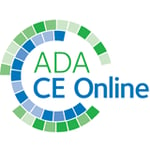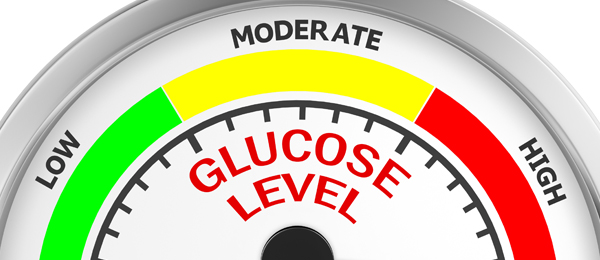Prevalence of oral diseases in systemically compromised and healthy patients
In the past several years, the connection between oral and systemic diseases has gained increased attention. In this 3-year prospective study, researchers evaluated the prevalence of periodontitis, caries, and peri-implant pathology in systemically compromised and healthy patients. The study was published in the December 2017 issue of Journal of Dentistry.
The study was conducted in 4 clinical centers in Portugal from July 2012 through December 2015. Inclusion criteria were age 18 years or older and the presence of natural teeth or dental implants. Patients with removable dentures were excluded. A total of 22,009 patients (9,035 men, 12,974 women) participated in the study; the length of follow-up and number of clinic visits varied among patients. The mean (standard deviation) age of patients was 48.5 (15.6) years, the authors wrote.
Twenty-two calibrated clinicians performed the oral examinations. At each appointment, the clinician administered a questionnaire to the patient, which asked about systemic conditions and any medications or other treatment received.
Periodontitis, caries, peri-implant disease, gingivitis, and mucositis were the dependent variables. The investigators defined periodontitis as inflammation of the gingiva and the adjacent attachment apparatus, with loss of clinical attachment and adjacent supporting bone. Caries was defined as a cavitated lesion or the presence of a new restoration. The researchers defined peri-implant disease as the presence of peri-implant pockets of 5 millimeters or more, vertical bone loss, and attachment loss of at least 2 mm in implants with a minimum follow-up of 1 year. They defined gingivitis as inflammation of the gingiva with no clinical attachment loss, and mucositis as inflammation of the mucosa surrounding the implant without signs of vertical bone loss or attachment loss.
Of the 22,009 patients in the study, 19,868 (90.3%) had natural teeth, and 11,863 (53.9%) had implants. With respect to acute conditions, the prevalence of gingivitis was 48.4% (n = 10,663), and the prevalence of mucositis was 55.6% (n = 6,594). About 14,462 patients (65.6%) had at least 1 acute oral condition, the authors wrote. Further, 10,223 patients (46.4%) had at least 1 chronic oral disease, and 11,776 patients (53.5%) had no chronic oral diseases. A total of 5,057 patients (23%) had no acute or chronic conditions.
The prevalence of periodontitis, dental caries, and peri-implant disease in this study was 17.6%, 36.6%, and 13.9%, respectively. Periodontitis was reported in 1,840 of 7,861 patients (23%) with systemic conditions and in 1,657 of 12,007 patients (13.8%) with no systemic conditions. According to the systemic condition–specific regression model, diabetes (odds ratio [OR] = 1.49; 95% confidence interval [CI], 1.24 to 1.79), HIV positivity (OR = 4.37; 95% CI, 1.05 to 18.24), and smoking (OR = 1.90; 95% CI, 1.74 to 2.07) were risk indicators for periodontitis.
Dental caries was reported in 3,008 of 7,861 patients (38.3%) with systemic conditions and in 4,255 of 12,007 patients (35.4%) with no systemic conditions. Risk indicators for dental caries were cardiovascular conditions (OR = 1.10; 95% CI, 1.01 to 1.20), diabetes (OR = 1.24; 95% CI, 1.05 to 1.46), neurologic conditions (OR = 1.84; 95% CI, 1.32 to 2.57), and smoking (OR = 1.18; 95% CI, 1.09 to 1.27).
Peri-implant disease was reported in 921 of 5,988 patients (15.4%) with systemic conditions and in 729 of 5,875 patients (12.4%) with no systemic conditions. According to the systemic condition–specific model, smoking (OR = 1.84; 95% CI, 1.64 to 2.07) was a risk indicator for peri-implant disease.
This study had several limitations, the authors pointed out. One was the short-term follow-up, which may have led to an underestimation of the prevalence of oral diseases. Another limitation—particularly for the evaluation of smoking habits—was the self-reported nature of the data. Given the probable low reliability of patient reporting, the researchers recorded smoking simply as “present” or “absent.”
The prevalence of oral diseases in this private practice setting was high, the authors wrote. Moreover, it differed significantly between healthy and systemically compromised patients. Smoking was the only factor associated with all 3 chronic oral diseases; its suppression could potentially bring about health benefits through a reduced number of cases of dental caries, periodontitis, and peri-implant pathology, the authors concluded.
Read the original article here or contact the ADA Library & Archives for assistance.
Are dental implants feasible in medically compromised patients?
Dental implant treatment is a common procedure with very high survival rates, but the literature contains limited information regarding the feasibility of placing implants in medically compromised patients. In this review article, published online February 26 in Oral Diseases, researchers evaluated several medical conditions and offered precautionary measures and other recommendations to reduce the risk of complications.
There are no absolute contraindications to implant therapy, the authors wrote. However, for some conditions, implant placement needs to be postponed or performed early.
Alcohol and smoking: Although alcohol itself does not affect implant survival, many individuals who consume large amounts of alcohol also smoke and do not have good oral hygiene habits. Smoking increases the risk of implant failure and peri-implantitis.
Antiresorptive drug treatment: Patients who take oral bisphosphonates and other antiresorptive drugs for osteoporosis experience implant survival rates that are comparable to those in healthy patients. For patients who receive intravenous antiresorptive drug treatment for bone metastasis, the risk of developing medication-related osteonecrosis of the jaws is increased. However, when patients follow an adequate oral hygiene regimen, marginal bone loss probably is comparable to that observed in healthy patients, the authors wrote. Perioperative antibiotic prophylaxis is strongly advised in patients receiving antiresorptive drug treatment for bone metastasis, and bone augmentation surgery should be avoided when possible.
Diabetes mellitus: In patients with well-controlled diabetes, dental implant survival is comparable to that in healthy individuals. Several studies have reported good peri-implant health and bone loss comparable to that in healthy patients. According to some studies, patients with hyperglycemia are at an increased risk of developing peri-implantitis; however, other studies have not reported such findings.
Head and neck cancer: Surgical resection for head and neck cancer may result in a compromised oral status, rendering conventional oral habilitation difficult. Thus, dental implants can be of great benefit to patients with head and neck cancer. Oral health-related quality of life also may improve as a result of receiving dental implants. However, the effect of radiation therapy on implant survival and peri-implant health is controversial, the authors wrote. Although some researchers have reported comparable results for patients undergoing radiation therapy and healthy patients, most studies reported poorer implant survival and peri-implant health in those who received radiation therapy. Further, the results are worse in the maxilla than in the mandible. To reduce the risk of developing osteonecrosis, patients should undergo implant treatment concomitant with ablative surgery, the authors wrote.
Immunocompromised patients: For patients undergoing immunotherapy, implant placement usually can be postponed until the completion of treatment, the authors wrote. Several case reports and series have shown that implant treatment in immunocompromised patients is feasible when proper precautions are taken.
Mucosal diseases: According to various case reports and series published in the past few years, implant treatment is successful in patients with mucosal diseases. The authors cited 1 study that recommended placement of implants when the oral manifestations of the mucosal disease are under control.
Drugs: A common adverse effect of some drugs is an increase or a decrease in salivary secretion or patients’ perception of oral dryness. However, changes in salivary flow are not a contraindication to implant treatment, the authors wrote. Implant survival is not reduced, and peri-implant health is affected only slightly. Some studies published in the past few years have reported an association between use of proton pump inhibitors and an increased risk of implant failure.
In light of the significant functional benefits associated with dental implants, as well as the resulting improvement in oral health-related quality of life, implant treatment is feasible in almost any medically compromised patient, the authors concluded. Precautionary measures may be needed, and a high level of follow-up care typically is required to ensure prompt identification and treatment of any peri-implant health problems.
Read the original article here or contact the ADA Library & Archives for assistance.
Hyperglycemia and peri-implant diseases
Peri-implant diseases pose a major challenge in dental implant treatment, and, thus, prevention and early diagnosis are essential. The objective of this systematic review and meta-analysis was to determine whether hyperglycemia is associated with peri-implant mucositis or peri-implantitis. The study was published online March 27, 2017, in Journal of Clinical Periodontitis.
Two authors conducted independent searches of several electronic databases (Ovid MEDLINE, Embase, Cochrane Central Register of Controlled Trials, Cochrane Oral Health Group Trials Register, Web of Science, and SciVerse). In addition, they searched the gray literature for potentially relevant studies and conducted hand searches of recently published articles in dental journals. The researchers assessed study quality by means of a modified Newcastle-Ottawa scale.
Potentially eligible studies were prospective or retrospective noninterventional cohort, case-control, or cross-sectional investigations of the presence or progression of peri-implant diseases in patients with known glycemic status. Other inclusion criteria were presence of a control group with normoglycemia, study duration of 6 months or longer, and enrollment of at least 10 participants. To eliminate possible bias, the authors included only those studies that defined peri-implant mucositis as an inflammatory condition manifested by swelling and redness but no pathological bone loss, and peri-implantitis as clinical inflammation combined with radiographic marginal bone loss of more than 2 millimeters.
After removing duplicates, the researchers identified 401 studies for possible inclusion. Of these, 327 were excluded on the basis of titles and abstracts, leaving 74 studies. The reviewers removed 62 studies that did not meet the inclusion criteria, resulting in 12 studies for qualitative analysis. Seven of the 12 studies reported prevalence data that could be synthesized in a meta-analysis.
The results of the meta-analysis showed that the risk of peri‐implantitis was almost 50% higher in patients with hyperglycemia than in patients with normoglycemia (risk ratio [RR] = 1.46; 95% confidence interval [CI], 1.21 to 1.77; odds ratio [OR] = 1.89; 95% CI, 1.31 to 2.46; z = 5.98; P < .001). When the lower and upper CI limits for RR and OR are grouped together, the risk of peri-implantitis in patients with hyperglycemia is between 1.21- and 2.46-fold higher than that in patients with normoglycemia.
The study findings did not reveal a statistically significant association between hyperglycemia and peri‐implant mucositis (RR = 0.92; 95% CI, 0.72 to 1.16; OR = 1.06; 95% CI, 0.84 to 1.27; z = 1.06; P = .29).
Among nonsmokers, those with hyperglycemia had a 3.39‐fold higher risk of developing peri‐implantitis than did those with normoglycemia (95% CI, 1.06 to 10.81; z = 2.06; P < .04).
When considering implant therapy in patients with diabetes, clinicians should take into account the potentially higher risk of peri-implant diseases, especially peri-implantitis. Patients should be informed of the importance of following a strict oral hygiene regimen, accompanied by periodic professional maintenance visits to achieve long-term implant success.
On the basis of the evidence in this systematic review and meta-analysis, the researchers concluded, with caution, that the risk of peri-implantitis was higher in patients with hyperglycemia than in those with normoglycemia. Future longitudinal studies should apply globally accepted definitions of peri-implant diseases, and researchers should monitor patients’ blood glucose levels before and during the study to collect more homogeneous quantitative data that allow appropriate comparisons between studies.
Read the original article here or contact the ADA Library & Archives for assistance.
Dental implant osseointegration and long-term survival in elderly patients
Dental implant survival has been well documented in younger cohorts, but little is known about the effect of age on osseointegration and long-term survival. In this systematic review and meta-analysis, researchers evaluated implant survival in patients 75 years and older, the impact of systemic medical conditions on survival, or both. The study was published online October 17 in Clinical Oral Implants Research.
Two researchers independently searched 3 electronic databases—PubMed, Embase, and Cochrane Central Register of Controlled Trials—to identify studies pertaining to elderly patients with implants, as well as to patients of any age who had any of the most common systemic conditions affecting older adults. They supplemented the searches with hand searches of dental journals that were not accessible electronically or that lacked an online abstract.
The initial screening resulted in identification of 6,893 articles. After excluding duplicates and irrelevant articles, followed by title and abstract screening, the researchers selected 680 studies for full-text review. Of these articles, 60 were included in the study for data analysis. The researchers used the Cochrane collection’s tool to assess the risk of bias and the Newcastle-Ottawa scale to assess the quality of included randomized controlled trials and prospective cohort/case-control studies.
Of the 60 studies, 7 were composed exclusively of participants 75 years or older, and were included in the meta-analysis. The remaining 53 studies consisted of participants of all ages and reported on the most common systemic conditions of elderly individuals; these studies were included in the descriptive analyses.
The fixed-effects model showed an overall implant survival of 97.3% (95% confidence interval [CI], 94.3% to 98.7%; n = 7 studies) at 1 year and 96.1% (95% CI, 87.3% to 98.9%; n = 3 studies) at 5 years, the authors wrote. In addition, the 7 studies in the meta-analysis reported peri-implant bone loss ranging from 0.1 millimeter to 0.51 mm during the first year after loading.
The investigators identified several studies pertaining to dental implant survival in patients with cardiovascular disease, cancer, osteoporosis, Sjögren syndrome, diabetes mellitus, or certain neurocognitive impairments. However, the literature search did not reveal any evidence regarding implant survival and dementia, respiratory diseases, liver cirrhosis, or osteoarthritis.
- Cardiovascular disease: Two studies reported implant survival rates that were the same as or higher than those in healthy patients.
- Cancer: Of the 17 studies that investigated implant survival in patients undergoing radiation therapy, 15 reported on implants placed after radiation therapy. Survival rates ranged from 57.1% (in 1 study in which implants were placed before irradiation) to 97.9%. Patients with bone metastases who receive high‐dose antiresorptive therapy (ART) are at high risk of experiencing complications after implant placement, the authors wrote.
- Osteoporosis: Fourteen studies reported predominantly high implant survival rates in patients undergoing ART for osteoporosis. Medication-related osteonecrosis of the jaw was rarely specified.
- Sjögren syndrome: Five studies investigated the relationship between dental implant survival and hyposalivation in patients with Sjögren syndrome. However, no studies reported the effect of hyposalivation on implant survival in patients receiving radiation therapy for cancer. All but 1 study reported implant survival rates of 100%.
- Diabetes mellitus: Seven studies evaluated implant survival in patients with diabetes mellitus, primarily type 2. Survival rates ranged from 86.3% (24-month observation period) to 100% (12-month observation period).
- Neurocognitive impairment: Although the literature search did not reveal any studies pertaining to implant survival and Alzheimer disease or other forms of dementia, several case reports investigated Parkinson disease, Huntington disease, or other neurocognitive impairments. Implant survival rates ranged between 82.1% and 100%.
The results of this systematic review and meta-analysis show that placement of dental implants in patients 75 years or older is a predictable treatment option with very high survival rates. Further, the functional and psychosocial benefits of dental implants outweigh the risks associated with common medical conditions, the authors concluded.
Read the original article here or contact the ADA Library & Archives for assistance.
Unsurpassed strength. Natural esthetics. Zero compromise.
Whether prescribed for everyday crowns and bridges or full-arch implant prostheses, BruxZir Solid Zirconia exceeds the functional requirements of the oral cavity and delivers patient-pleasing esthetics.
Registration now open for AO 2019 Annual Meeting
Early Bird discounts available through January 14, 2019 
“Current Factors in Clinical Excellence” will be held March 13-16, 2019, at the Walter E. Washington Convention Center in downtown Washington, DC. This 4-day scientific international annual meeting will include many exciting features and the quality experience you have come to expect from Academy of Osseointegration. AO’s 2019 Annual Meeting will provide:
- A key forum for leading edge, evidence-based practices in the science underpinning implant dentistry.
- A geographic focus on Europe, with world-renowned speakers from all continents.
- More than 30 hours of ADA CERP Credit, featuring surgical and prosthetic learning tracks, 6 in-depth full-day hands-on workshops, and 2 pre-conference sessions.
- A truly multi-disciplinary environment including dedicated programs for allied staff and laboratory technicians.
- Unmatched global networking with peers across all specialties.
- Numerous historical sites and prominent attractions, including the National Museum of Natural History, the site of AO’s landmark President’s Reception.
Register online by January 14, 2019, to take advantage of Early Bird registration rates — a savings of up to $250 — and secure your spot in limited attendance sessions. Register today.
Need some extra CE before the end of the year?  ADA CE Online has you covered! Subscriptions to ADA CE Online are now available. Get unlimited access to the entire ADA CE online library, including JADA, for one year from purchase. Access anywhere, anytime. With new courses being added every month, you’ll never run out of education opportunities. Group subscriptions are also available, check it out now!
ADA CE Online has you covered! Subscriptions to ADA CE Online are now available. Get unlimited access to the entire ADA CE online library, including JADA, for one year from purchase. Access anywhere, anytime. With new courses being added every month, you’ll never run out of education opportunities. Group subscriptions are also available, check it out now!

The consulting editor for JADA+ Scan — Osseointegration is Clark M. Stanford, DDS, PhD, Distinguished Professor and Dean, University of Illinois at Chicago College of Dentistry and Vice President, Academy of Osseointegration Board of Directors. |
|





.png?width=600&name=20160627_bruxzir-full-arch-implant-prosthesis_014466_SIG%20(1).png)


